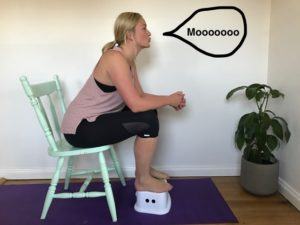Body changes during pregnancy
Congratulations on your pregnancy! Conception and pregnancy continue to be one of life’s greatest miracles and such an exciting (and challenging) time for women around the world.
Regardless of how well or unwell you feel during this 9 months, your body is undergoing tremendous change to be able to carry your baby.
It pays to know what is happening so you can prepare for it and manage your symptoms better. Knowing about how the body is changing during pregnancy will also allow you to recover much better after birth.
Let’s start with all the major areas of the body and what changes occur during pregnancy.
Breasts
Changes in your breasts is often a tell-tale sign that you are in the early stages of pregnancy. Most women will experience swollen and tender breasts initially.
As the first trimester progresses, breast size will increase and most growth will occur by around week 16. It is common for most women to increase 1-2 cup sizes over their pregnancy journey.
Lactation is such an important bodily function for the survival of the newborn, so breast changes happen early in the pregnancy as a matter of importance.
You will also notice that your nipples and areolar will darken and enlarge. This is in preparation for when your newborn arrives so that they can easily find their way to the nipple for feeding.
A small proportion of women may start to produce milk from as early as 14 weeks in their pregnancy.
How incredible is the human lactation system!
Pelvic Floor
Your pelvic floor muscles are those that sit at the base of your pelvis and attach from the pubic bone to the tailbone. They are responsible for supporting your bladder, uterus and bowel and keeping you continent.
These muscles become weakened during pregnancy due to the increase in weight (usually 12-15kgs) and the increased laxity in your pelvic ligaments due to pregnancy hormones.
If you have a vaginal birth, these muscles can stretch up to 2.5 times their normal length!
So you can imagine the importance in maintaining good strength in these muscles during pregnancy to avoid incontinence or prolapse later on. Best to start practicing early, however it is never too late to start.

When trying to contract your pelvic floor, imagine you are squeezing the muscles around the vagina or trying to stop the flow of urine.
Make sure you don’t suck your belly or bottom in at the same time. I tell my clients that it should be a secret! No-one should be able to see that you’re doing your pelvic floor exercises.
Hold this contraction for 3-5 seconds, then release it completely. It is just as important to relax these muscles as it is to contract. Repeat this exercise 10 times and aim to do it 3 times/day.
You can practice in a variety of positions, but usually lying on your side or sitting in a chair is easiest.
Abdominals
As your belly starts to grow during pregnancy, naturally your abdominal muscles will stretch to accomodate this.
Your 6 pack muscles (rectus abdominus) are connected together in the middle of your tummy by a piece of connective tissue called the linea alba.
This tissue will stretch over the course of your pregnancy and create an abdominal separation in the midline of your tummy.
Some women will notice a bulging or doming in the middle of their tummy, other women will report back pain, pelvic floor dysfunction or a feeling of being “weak” through the core.

Bulging/doming in the abdomen should be avoided during pregnancy
It is completely normal for all women to have a small degree of separation by the end of their pregnancy.
For many women this will recover correctly in the first 8 weeks after birth, however approximately 40% of women will still have a separation at 6 months postpartum.
To optimise your chances of not being in the 40% of women who have ongoing issues, there are plenty of things you can do during pregnancy to prevent this separation from worsening.
- Make sure to roll out of bed, rather than performing a “sit-up” motion
- Practice good posture
- Keep active and strong during pregnancy
- Avoid heavy abdominal exercises such as sit ups and planks
- Wear a tubigrip bandage or belly support band if you start to notice bulging/doming
- Avoid constipation and straining on the toilet
If you think you might have a separation be sure to check in your local women’s health physiotherapist!
Cardiorespiratory system
Before you even feel particularly pregnant, your cardiovascular system is undergoing tremendous change.
By the end of the first trimester, it is estimated that your cardiac output has already increased by 40%… no wonder you feel tired!
Your overall blood volume will increase which may see a decrease in your blood pressure. Take it easy when getting out of bed in the morning as you might experience some dizziness.
Due to this increase in blood volume, combined with hormonal changes, many women may notice varicose veins in their vulva or their legs.
The best way to manage these is to wear support garments, offload the veins by resting on your left side when you can and trial an exercise class in the water as this can reduce the load on your veins.
Gastrointestinal system
The most common change you will see when it comes to your gut is nausea and morning sickness in the first trimester. This will affect up to 80% of all women, but will resolve by week 14 for most women. This is believed to be due to the increase in the HCG hormone as well as rising oestrogen levels.
Another common pregnancy symptom is constipation. Oh the joys! This can be due to a change in diet when trying to manage nausea and cravings as well as the hormone progesterone which slows your digestive system down.
The best way to combat constipation is to increase your fluid and fibre intake and to stay active.
If it continues to persist, make sure to consult with your healthcare practitioner for further treatment.
Chronic constipation can significantly weaken your pelvic floor if you are straining to empty your bowels and is number 1 on the list of things to fix to prevent long term pelvic floor damage.
Remember to use a foot stool and gently “moo” when emptying your bowels to avoid straining!

How to poo properly!
If you thought the fun stopped there, you were wrong. Let me introduce you to reflux if you haven’t already met!
This is a common complaint in the second and third trimesters. This is due to hormonal changes which soften the valve between your gut and oesophagus, making it easy for acid to make it’s way in the wrong direction.
There are safe medications you can take during pregnancy to treat this. Also be mindful to avoid fatty or spicy food and eat 3-4 hours before going to bed.
Prepare yourself with knowledge… control what you can and then accept what you can’t!
xo Physio Laura

